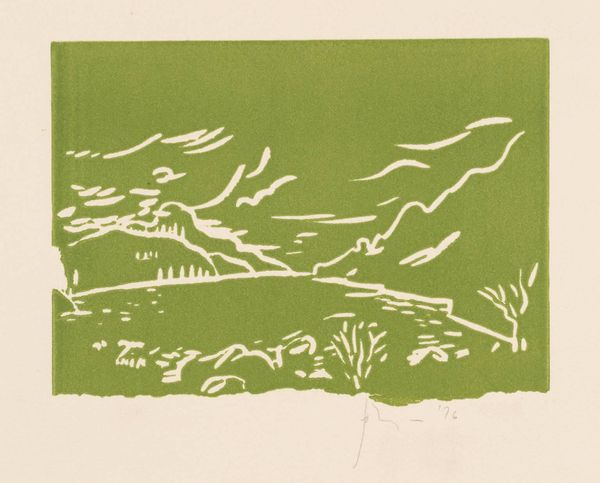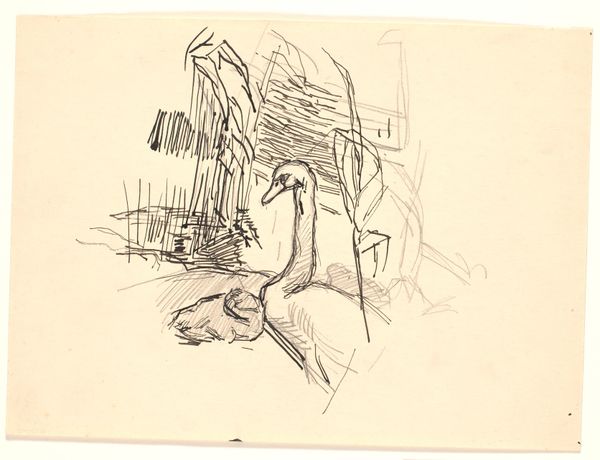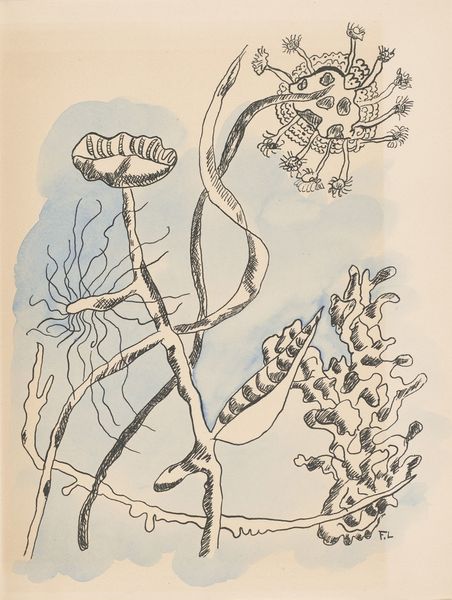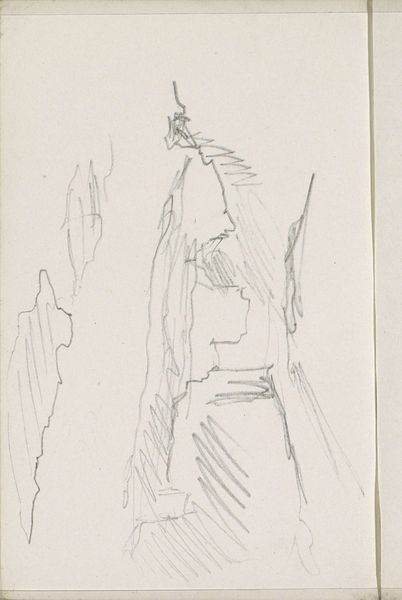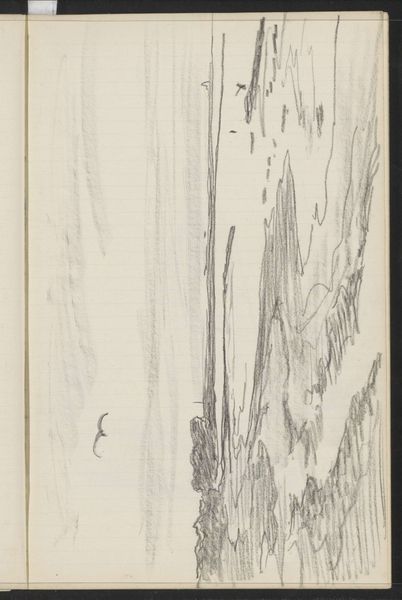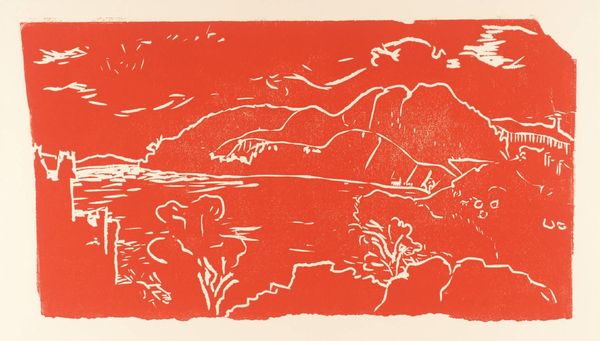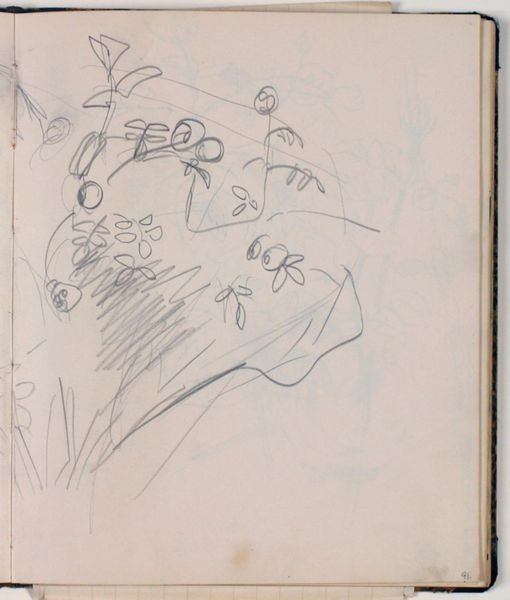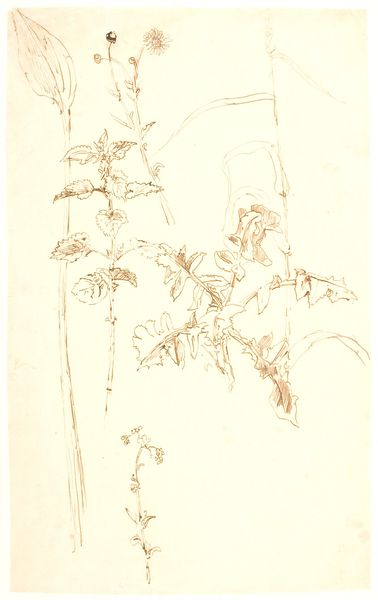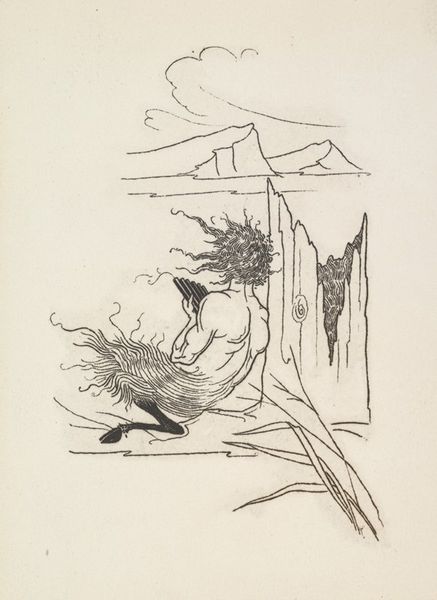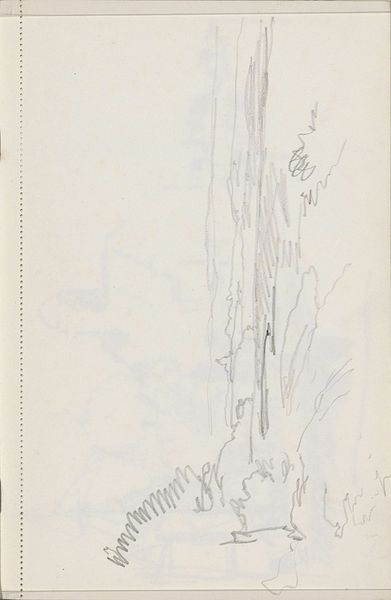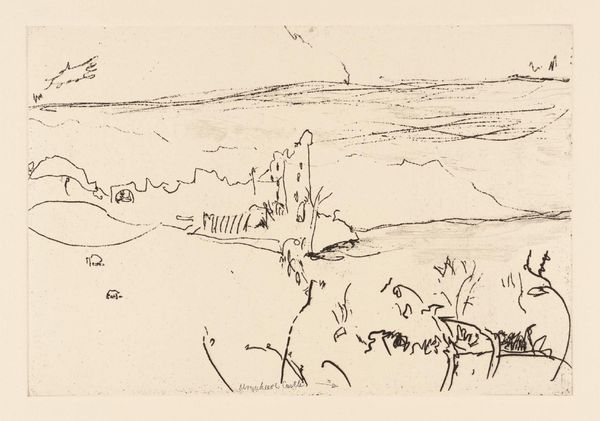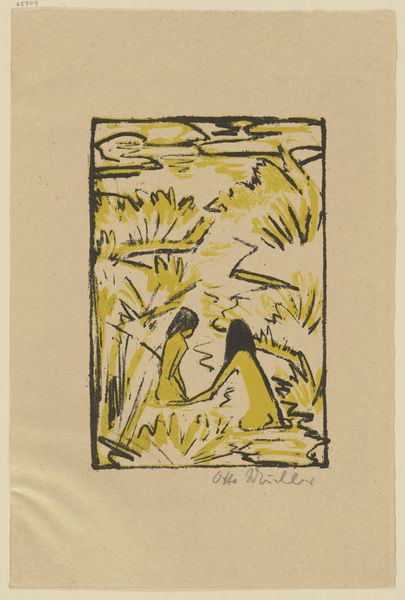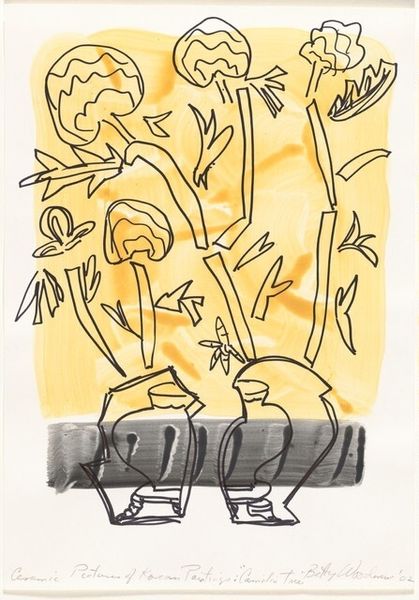
drawing, paper, ink, pencil, pastel
#
drawing
#
pen sketch
#
landscape
#
rayonism
#
figuration
#
paper
#
ink
#
geometric
#
pencil
#
line
#
russian-avant-garde
#
pastel
Dimensions: 7 1/8 x 4 5/8 in. (18.1 x 11.75 cm)
Copyright: No Copyright - United States
Editor: This drawing, "Gardeners over the Vines" by Natalia Goncharova, made in 1913, looks to be in ink, pencil, and pastel on paper. I am struck by how simplified the figures are. What do you see in this piece? Curator: Well, beyond the immediate impression, consider what 'the garden' represents. It’s a symbolic space of cultivation, both literally and metaphorically. These gardeners, with arms raised, almost seem to be summoning something—perhaps a harvest, perhaps change. How do their gestures relate to our collective cultural memory of labor and the land? Editor: That’s interesting, I didn’t immediately see the raised arms as a summoning gesture, I interpreted them more like a sign of praise. Curator: Exactly, there's ambiguity, isn't there? And within that ambiguity lies the work's power. In the Russian avant-garde movement of the time, many artists explored themes of rural life and labor, attempting to redefine Russia’s cultural identity. Goncharova, pulling from both Western and Eastern traditions, offers an image steeped in a complex blend of cultural signs. The very lines used—are they purely descriptive, or are they carrying an emotional charge as well? Editor: So the style, which at first I took to be simple, is actually communicating a lot about that cultural moment? Curator: Precisely. Look how the colors, although muted, enhance the feeling. It feels at once like an ancient fresco and a futuristic vision. It shows us the enduring human connection to nature. Editor: I see the image carries an unexpected weight considering the apparent simple artistic choices. Curator: Absolutely. It is as if these simple tools were intentionally employed to create cultural continuity, but with an evolving message to reach the future.
Comments
minneapolisinstituteofart almost 2 years ago
⋮
Natalia Goncharova studied sculpture at the Moscow Academy in 1898-1900 before she turned to painting. She and the painter Mikhail Larionov (1881-1964) sought to reconcile traditional art based on Russian folklore with avant-garde movements and founded a primitive group in 1909. In 1913, she was a signatory of Larionov's manifesto Rayism. The 10 inserted double-page blue and brown plates are Goncharova's only colored Rayist lithographs and were conceived independently of the author's text. Sergei Bobrov, "the Russian Rimbaud," was a member of the short-lived Symbolist group Lirika, whose members sought to publish their own works. Bobrov, himself an illustrator and especially interested in book design, concludes his texts with a short article proclaiming that "Rayism was the only proper form of book illustration because it did not attempt to add anything to the poet's conception but enabled the artist to use an analogous metaphor."
Join the conversation
Join millions of artists and users on Artera today and experience the ultimate creative platform.
